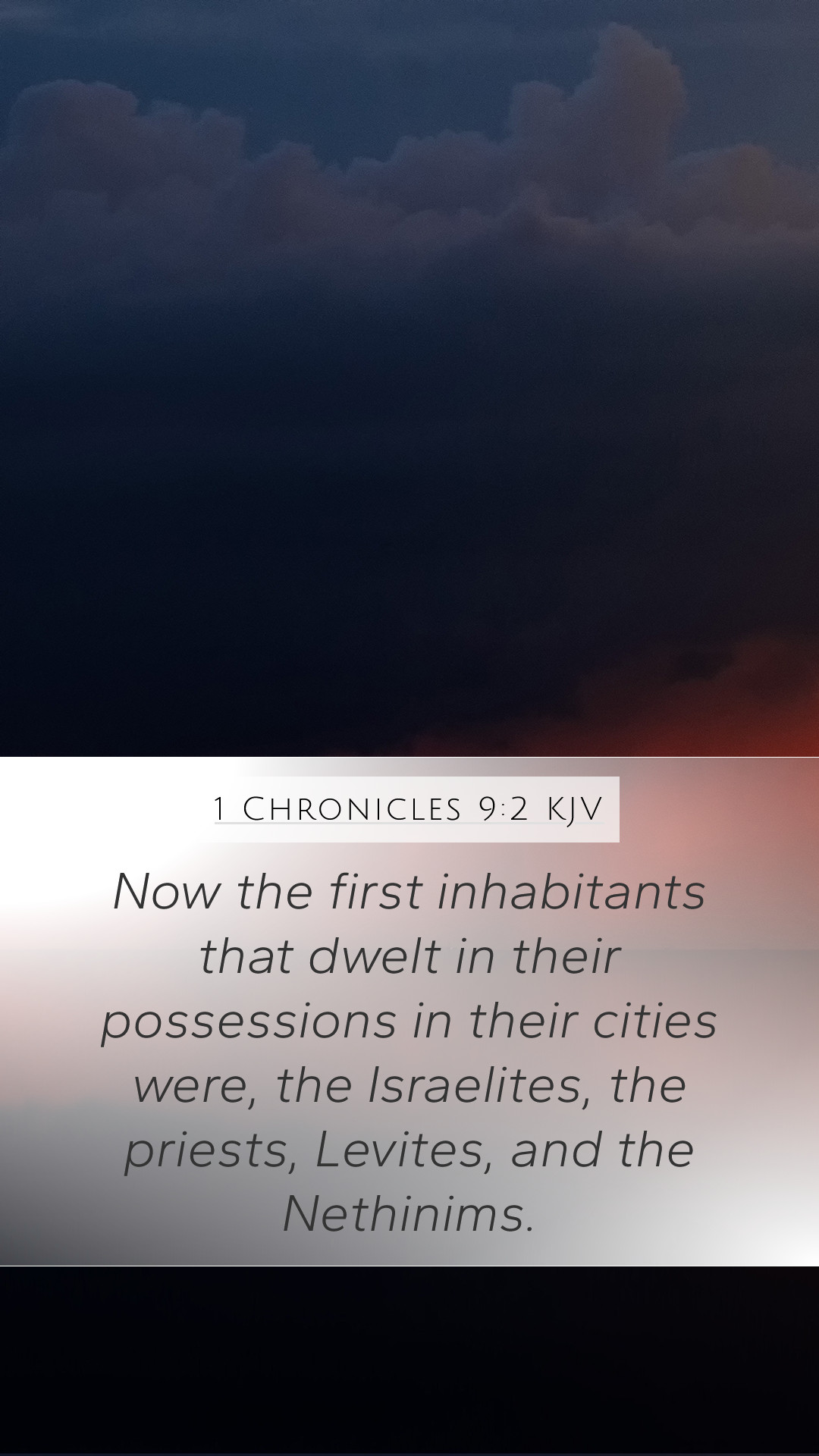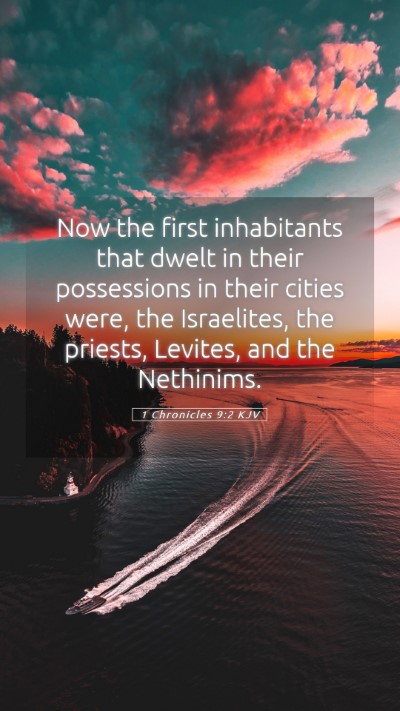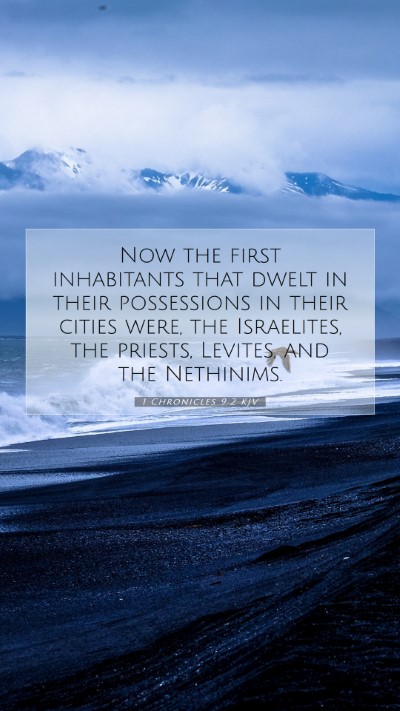Bible Verse Commentary: 1 Chronicles 9:2
Verse: "And the first inhabitants who dwelt in their possessions in their cities were Israelites, the priests, the Levites, and the Nethinim."
Overview
This passage from 1 Chronicles 9:2 serves as an introduction to the clans and families that returned to Jerusalem after the Babylonian exile. It emphasizes the importance of various groups, particularly the Levites and priests, in re-establishing worship and community in the land. This verse marks the social and religious structure of the Israelites in their restoration.
Meaning of Bible Verses
The essence of this verse encapsulates the reintegration of the Israelite community. The mention of "priests" and "Levites" illustrates the central role of religious leadership in guiding the community spiritually. The "Nethinim," or temple servants, highlight the importance of service and labor in support of the religious practices.
Historical Context
Historically, 1 Chronicles was written to record the lineage and the restoration of Israel, emphasizing God's faithfulness to His covenant. The return to Jerusalem from Babylonian exile is pivotal for understanding the restoration of not just the cities but also the cultural and religious identity of the Israelites. This verse symbolizes a new beginning after a prolonged period of captivity.
Bible Verse Interpretations
-
Matthew Henry: He notes that the returnees were not just a remnant but a structured group crucial for the continuity of worship practices. The priests and Levites, serving specific functions within the Temple, are portrayed as essential for the spiritual rejuvenation of the people.
-
Albert Barnes: Barnes emphasizes the social fabric being reestablished, including a focus on the roles of the Levites. According to Barnes, this reflects the importance of organized community leadership and service.
-
Adam Clarke: Clarke draws attention to the specific designations of the individuals mentioned and their responsibilities within the community. He frames the verse within the broader narrative of God’s guidance through leadership roles in Israel.
Bible Study Insights
Understanding 1 Chronicles 9:2 is crucial for those engaged in Bible study groups or online Bible study as it lays the groundwork for comprehending how the Israelites sought to re-establish their identity after exile. This verse also provides insight into the organizational structure necessary for spiritual and communal life.
Application of the Verse
In applying this verse to daily life, believers can reflect on the importance of community, leadership, and spiritual service in their own contexts. Each part of the community has a role to play, echoing the diversity of gifts that contribute to the health of the church today.
Significance of the Community Structure
By revisiting this historical moment, we can gain a deeper understanding of how God organizes His people and the significance of those roles. The roles of priests and Levites were not merely ceremonial but foundational for a strong community centered around God.
Cross References
- Nehemiah 11:3 - Discusses the leaders of the provincial officials in Jerusalem.
- Ezra 2:36-39 - Lists the priests who returned from exile.
- 1 Chronicles 6:31-38 - Details the families of the Levites.
- Ezra 8:15 - Presents the lineage and roles during the return to Jerusalem.
- Numbers 3:6-10 - Outlines the duties of the Levites.
In-Depth Bible Verse Analysis
For those seeking Bible study insights and deeper Biblical exegesis, 1 Chronicles 9:2 suggests an opportunity for reflection on the nature of community and divine service. It inspires discussions about how structured leadership fosters spiritual growth in modern congregations.
Conclusion
1 Chronicles 9:2 serves an essential role in understanding the rebuilding phase of ancient Israel. It opens avenues for understanding Scripture more richly, while also encouraging believers today to engage actively in their faith communities. By examining the verse through various commentaries, including those by Matthew Henry, Albert Barnes, and Adam Clarke, we find profound insights into both historical significance and contemporary application.


